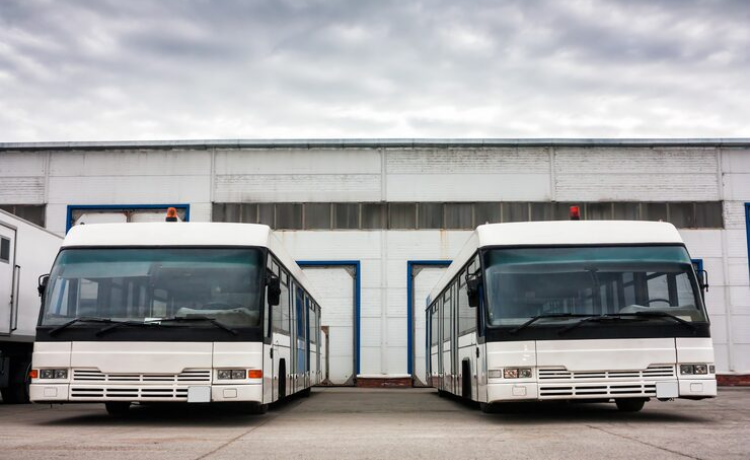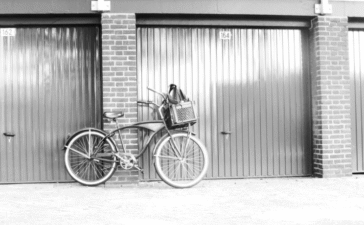The unsung heroes of public transportation, bus garages are the backbone of any city’s transit system. These facilities are more than just parking lots for buses; they are complex operational hubs where vehicles are maintained, cleaned, refueled, and stored. Without them, the daily rhythm of urban life would quickly grind to a halt. This article explores the vital role of bus garages, from their historical roots to their high-tech future, and explains why they are essential for keeping our cities moving.
So, what exactly is a bus garage? It is a specialized facility designed to support the entire lifecycle of a bus fleet. Here, a dedicated team of mechanics, technicians, and support staff work around the clock to ensure every vehicle is safe, reliable, and ready for service. Think of it as a mission control center for buses, where every detail—from engine diagnostics to seat cleanliness—is managed with precision.
It’s important to distinguish a bus garage from a bus depot. While the terms are often used interchangeably, a bus depot primarily serves as a point for passenger exchange, route beginnings, or layovers. In contrast, a bus garage is focused on vehicle maintenance, servicing, and long-term storage. A garage is where the heavy lifting happens, ensuring the fleet remains in peak condition. This distinction highlights the garage’s critical function in maintaining operational efficiency and passenger safety.
The History and Evolution of Bus Garages
The story of the bus garage is a story of urban evolution. The earliest versions were simple tram sheds, built to house and maintain the streetcars that dominated city transport in the late 19th and early 20th centuries. As motorized buses replaced trams, these sheds were repurposed and expanded. Early bus garages were often basic structures, but as technology advanced, so did their design.
A prime example of this evolution is the Stockwell Bus Garage in London. Opened in 1952, its vast, unsupported concrete roof was an architectural marvel of its time, designed to house 200 buses without internal pillars obstructing movement. This design reflected a shift toward maximizing space and efficiency.
The most significant recent change has come with the rise of electric vehicles. The transition to electric buses has required a complete reimagining of bus garage infrastructure. Garages now need extensive charging stations, specialized maintenance bays for battery systems, and upgraded electrical grids to handle the massive power demand. For instance, King County Metro in Seattle has invested heavily in converting its garages to support a fully electric fleet by 2035, installing overhead charging gantries and sophisticated energy management systems. This shift demonstrates how garages continuously adapt to meet the needs of modern transit.
Key Operations and Services in a Bus Garage
A bus garage is a hive of activity, with several key operations running simultaneously to keep the fleet on the road. These bus garage services are critical for the smooth functioning of any public transport network.
Maintenance and Repairs
At the core of every bus garage is its maintenance and repair workshop. Here, skilled mechanics and technicians perform a wide range of tasks, from routine inspections to complex engine overhauls. They handle mechanical, electrical, and bodywork repairs, ensuring that every bus meets strict safety standards. Preventative maintenance is a top priority, as it helps identify potential issues before they cause breakdowns, minimizing service disruptions and ensuring passenger safety.
Fueling and Refueling
Fueling is a daily necessity. For conventional diesel fleets, this involves large-scale fueling stations that can service dozens of buses quickly. For electric bus garages, this process involves managing complex charging schedules. Many modern garages use smart charging systems that optimize power usage by charging buses during off-peak hours, reducing energy costs and strain on the power grid.
Bus Washing and Cleaning
Maintaining a clean fleet is crucial for passenger experience and public perception. Most modern garages use automated wash stations that can clean a bus in minutes. Interior cleaning is equally important, with crews working to sanitize surfaces, remove trash, and ensure a pleasant environment for riders. A clean bus is a sign of a well-maintained transit system.
Storage and Parking
When not in service, buses are stored in designated parking areas within the garage. The layout is meticulously planned to allow for efficient movement and quick deployment. Some garages offer climate-controlled indoor parking to protect vehicles from harsh weather, which is especially important for sensitive electronic components in modern and electric buses.
Inside a Modern Bus Garage: Design and Infrastructure
The design of a modern bus garage is a masterclass in operational efficiency. The layout is carefully planned to streamline workflow, with dedicated zones for maintenance, fueling, cleaning, and parking. Wide driveways and clear pathways ensure that buses can move through the facility without congestion.
Safety and security are paramount. Garages are equipped with advanced security systems, including CCTV surveillance and controlled access points, to protect valuable assets and ensure a safe working environment. Strict protocols for handling hazardous materials, like fuel and lubricants, are enforced, and fire suppression systems are strategically placed throughout the facility. These measures create a secure and organized environment where staff can work effectively.
How Bus Garages Drive Public Transportation Efficiency
Bus garages play a direct role in the efficiency of public transportation. By ensuring that buses are well-maintained and readily available, they minimize downtime and prevent service interruptions. This reliability is key to building public trust and encouraging more people to use public transit.
Fleet Management and Scheduling
Fleet management for buses is a complex logistical challenge that begins at the garage. Advanced software is used to track vehicle health, schedule maintenance, and rotate buses to ensure even wear and tear. This data-driven approach allows managers to optimize fleet availability and coordinate maintenance schedules with route demands, ensuring that the right number of buses are always ready for service.
Sustainability Practices
Modern bus garages are increasingly focused on sustainability. Many facilities are incorporating green technologies, such as solar panels to generate renewable energy, rainwater harvesting systems for washing buses, and energy-efficient lighting. The shift to sustainable bus garages and electric fleets is a major step toward reducing the environmental footprint of public transportation. As of early 2024, the United States has over 5,000 zero-emission transit buses, a number expected to grow rapidly as more agencies invest in green infrastructure.
Careers and Opportunities in Bus Garages
Bus garages offer a wide range of stable and rewarding career paths. These jobs are essential for keeping our cities moving and provide opportunities for growth within the public transport sector.
Job Roles and Required Skills
Careers in bus garages include roles for mechanics, technicians, electricians, fleet managers, and cleaning staff. Mechanics and technicians need strong diagnostic and repair skills, often requiring specialized training and certifications. Fleet managers need excellent organizational and leadership skills to oversee daily operations. These positions offer competitive wages and benefits, making them an attractive option for those interested in a hands-on, impactful career.
Common Challenges Facing Bus Garages
Despite their importance, bus garages face several challenges that can impact their efficiency and effectiveness.
Maintenance and Technological Hurdles
Managing aging fleets is a significant challenge, as older buses require more frequent repairs and parts can be difficult to find. Integrating new technologies, such as GPS tracking and automated diagnostic systems, can also be a hurdle, requiring significant investment and staff training. For bus maintenance operations, keeping up with the rapid pace of technological change is a constant balancing act.
Operational Efficiency
Ensuring maximum fleet uptime is a daily challenge. Unexpected breakdowns, traffic congestion, and fluctuating passenger demand can all disrupt schedules. Garage staff must be adaptable and resourceful to address these issues quickly and keep the system running smoothly.
The Future of Bus Garages
The bus garage of the future will be smarter, greener, and more automated. Emerging technologies are set to revolutionize how these facilities operate.
Automation and Green Initiatives
AI-assisted diagnostics will help predict maintenance needs with greater accuracy, while automated robots could handle routine tasks like cleaning and refueling. The push for sustainability will continue, with more garages transitioning to fully electric fleets powered by renewable energy. These smart bus garages will leverage IoT devices and data analytics to create a fully integrated and highly efficient system.
You should also read: “auto garage rentals“
The Heartbeat of Public Transit
Bus garages are far more than simple storage facilities; they are the operational core of our public transportation networks. They ensure that our daily commutes are safe, reliable, and efficient. As cities grow and technology evolves, the role of the bus garage will become even more critical. Investing in modern, sustainable, and technologically advanced garage infrastructure is an investment in the future of urban mobility. These facilities will continue to be the silent engines that power our cities, ensuring that public transit remains a dependable and accessible choice for all.
Frequently Asked Questions (FAQs)
What is the difference between a bus garage and a bus depot?
A bus garage is a facility focused on the maintenance, repair, fueling, cleaning, and storage of buses. It is where the technical and operational support for the fleet happens. A bus depot, on the other hand, is primarily a location where bus routes begin or end, and where drivers may take layovers. It can also be a point of passenger exchange, similar to a bus station.
How often are buses maintained in a bus garage?
Buses undergo regular maintenance based on a strict schedule. This includes daily inspections before they leave the garage, as well as more thorough preventative maintenance checks at specific mileage or time intervals, such as every 6,000 miles. These inspections cover everything from engine performance and brake systems to lights and passenger safety features.
Can electric buses be serviced at traditional bus garages?
While some basic maintenance can be performed at traditional garages, servicing electric buses typically requires specialized infrastructure and training. Garages must be equipped with charging stations, and technicians need to be trained to work with high-voltage battery systems and electric drivetrains. Many transit agencies are retrofitting existing garages or building new ones specifically for their electric fleets.
What types of jobs are available at a bus garage?
Bus garages offer a variety of career opportunities, including bus mechanics, diesel technicians, electricians, bodywork specialists, cleaners, and fleet managers. There are also administrative and support roles. These jobs are crucial for the daily operation of the transit system and often come with competitive pay and benefits.
What safety measures are in place in bus garages?
Safety is a top priority in bus garages. Measures include strict protocols for handling hazardous materials like fuel and cleaning chemicals, fire suppression systems, and clear markings for pedestrian and vehicle traffic. Garages are also equipped with security systems like CCTV cameras and access control to protect assets and ensure a secure working environment for employees.












